SUMMARY
This is AI generated summarization, which may have errors. For context, always refer to the full article.
![[OPINION] Disaster fatigue](https://www.rappler.com/tachyon/2020/11/imho-disaster-fatigue.jpg)
2020 is the year of catastrophes, with the Taal eruption, the COVID-19 pandemic, and now our typhoon season. After the devastation of Typhoon Quinta, then came Rolly, one of the strongest storms to have made landfall on record. Then, just when we thought we had enough of typhoons, several more came. We are now experiencing the full impact of Ulysses – and this may not be the last typhoon we have this year.
What is disaster fatigue?
Isabella Khoo, writing for the Huffington Post, says that disaster fatigue happens when our mind is bombarded with bad news. There are adverse psychological effects on individuals, families, and communities when disasters come one after the other. But I think disaster fatigue has both macro and meso dimensions. Even institutions and organizations get overburdened and stretched out, too, as they are made up of people with finite resources. Disaster frontliners and managers are human beings who have limited mental and physical capabilities.
Local government units and the national government, then, do not run on infinite assets. For example, much of their budget has already been diverted to the COVID-19 response. People’s ability to give materially is also finite. In a recent conversation with a senior officer of a major volunteer organization, the officer said she was worried that a fundraising event may not be possible, as people had already given so much for pandemic-related efforts, and that the businesses of potential donors had been severely affected.
Addressing disaster fatigue
Recognizing that disaster fatigue encompasses the individual, organizational, and social levels is crucial. Scientists are warning that COVID-19 may not be the last pandemic the world will face in the immediate future. Our location in the Pacific of Ring of Fire also exposes us to multiple hazards such as volcanic eruptions and earthquakes. We also have more typhoons or tropical storms than most countries, and these will dramatically change in frequency, intensity, and direction due to climate change.
As such, we have to improve our disaster risk management (DRM) policies and practices. The keywords are efficiency, synergy, and impact. Efficiency means delivering necessary social services quickly to prevent and manage disaster risks. This is not just about making relief goods reach disaster-stricken communities faster; it is also about making decisive reforms in our national laws and institutions. Disaster managers have more than enough to worry about, yet they spend most of their time navigating circuitous bureaucratic procedures and dealing with slack in the procurement process. This drains the mental and physical resources one needs to focus on strategies for building resilient infrastructure, promoting disaster literacy, and minimizing disaster losses.
Perhaps the most important ways to strengthen the country’s resilience lie in streamlining our government processes and professionalizing disaster risk management. Politicians must stop with the illusion that DRM is like going into a war, where logistical operations and compliance to top commands are key. Disasters are multifaceted and multi-layered issues. Top-down commands in war-time scenarios do not apply, as DRM requires deliberation and brainstorming to come up with innovative and effective approaches.
There is greater value when our disaster managers have ample experience on the ground, where community perception and participation matter as much as the science of hazards and risks. We need our disaster field workers, our scientists, and our civil servants, who have historical and institutional memories as well as technical and social competencies, to be appointed to key and decisive — and ideally top — positions in our disaster governance institutions. Otherwise, our practitioners and experts will keep churning out ideas that might not see the light of day, as they are subject to the whims of transient appointees who do not have enough experience and keen interest in DRM.
Then there is synergy, which is the combined actions of different stakeholders to improve resilience. Currently, non-government organizations, people’s organizations, multilateral institutions, and the academe have avenues to work with government agencies. We also have the National Disaster Risk Reduction and Management Council (NDRRMC) where disaster policies and actions are coordinated. The government puts a premium on consultations and discussions among different stakeholders. Yet much of that remains just that – consultations, discussions, and policies. We know there are problems with procurement; we lack capable human resources to facilitate disaster efforts; there is fragmentation in the government’s DRM machinery; grey areas and confusion exist in the mandates of national and local governments; appointments for key positions at the national and local DRRM offices are politicized; among others.
Perhaps in 2020, as we experience the full economic, social, and psychological intensity of disasters, there will be a silver lining when we finally confront these bigger-than-life issues. There should be a national review of our DRM policies and practices aimed at making systemic changes. Perhaps if this administration’s persistence in fighting illicit drugs and silencing dissent is channeled instead into seriously rethinking and reshaping our national disaster strategy, the President will have the chance to leave a lasting legacy for Filipinos today and for generations to come.
Finally, impact means the ability of the synergized efforts by different stakeholders to prevent human and economic losses due to disaster risks. This is beyond measuring the impact of our policies, which many people have already written about. This is about the real difference that people on the ground can experience.
It can be a situation where people no longer have to be evacuated because lessons have already been learned from past disasters, and they are now relocated to a place safe from flooding and landslides. It can be about nurses whose chances of being infected from a contagious virus in hospitals are low because proper protocols and equipment are provided. It can be when mayors and governors make the right decisions because they were given sound advice from competent local DRRM officers, and because their roles and responsibilities in relation to the national government are set clearly. We can maximize the impact of our disaster efforts when government processes are made simple and efficient, the right people are in positions of power, and we work collaboratively to address these complex problems. The devil is in the in the details, but there are great benefits to finally confronting these demons.
Overcoming disaster fatigue sounds like a utopian vision, but it is not impossible to achieve. It is very difficult for this country to achieve inclusive development without making substantive and decisive actions to reform our DRM strategy. It is either we languish in resignation as disasters batter us or we make decisive efforts to turn things around. – Rappler.com
Ron Jay P. Dangcalan is an Assistant Professor at the Department of Social Development Services, College of Human Ecology and a Specialist at the Interdisciplinary Studies Center for Water at the University of the Philippines Los Baños.
Add a comment
How does this make you feel?
![[OPINYON] Ang tawag ng panahon sa panahon ng mga bagyo](https://www.rappler.com/tachyon/2020/11/ispeak-climate-change-November-12-2020.jpg?fit=449%2C449)
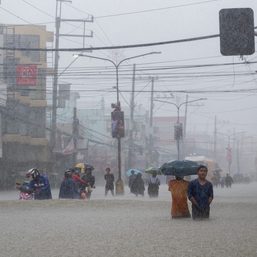
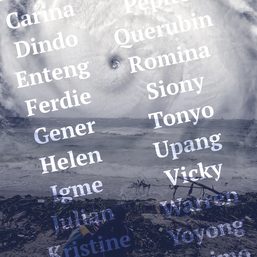
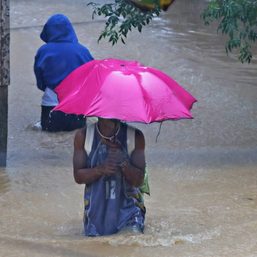
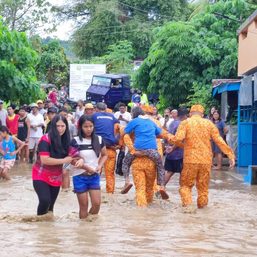
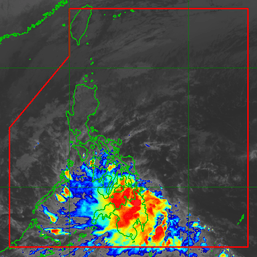
There are no comments yet. Add your comment to start the conversation.